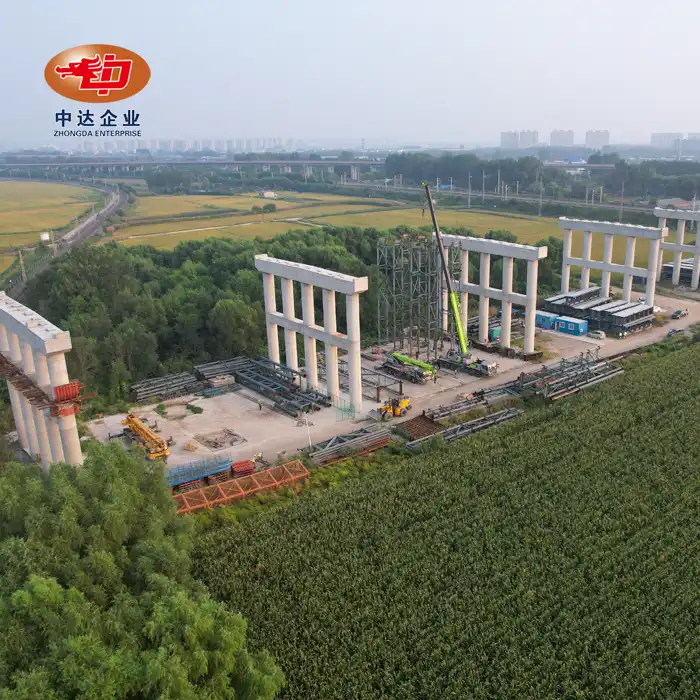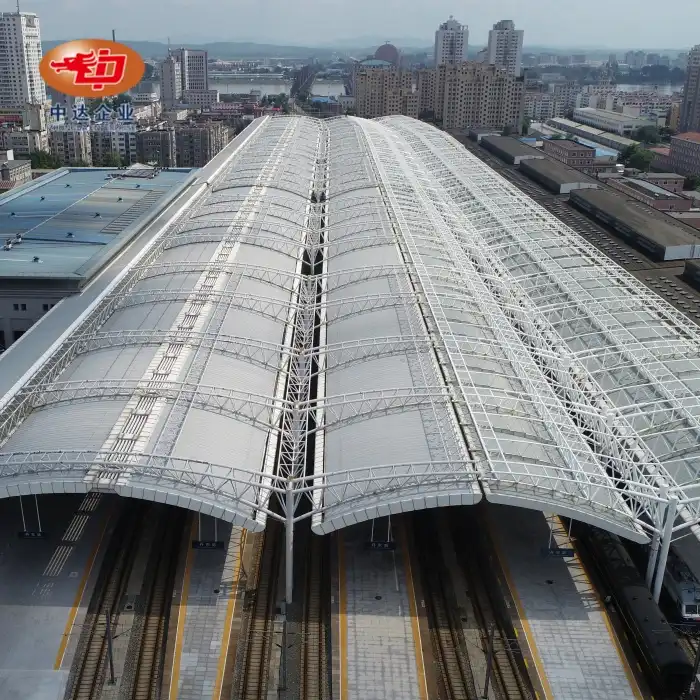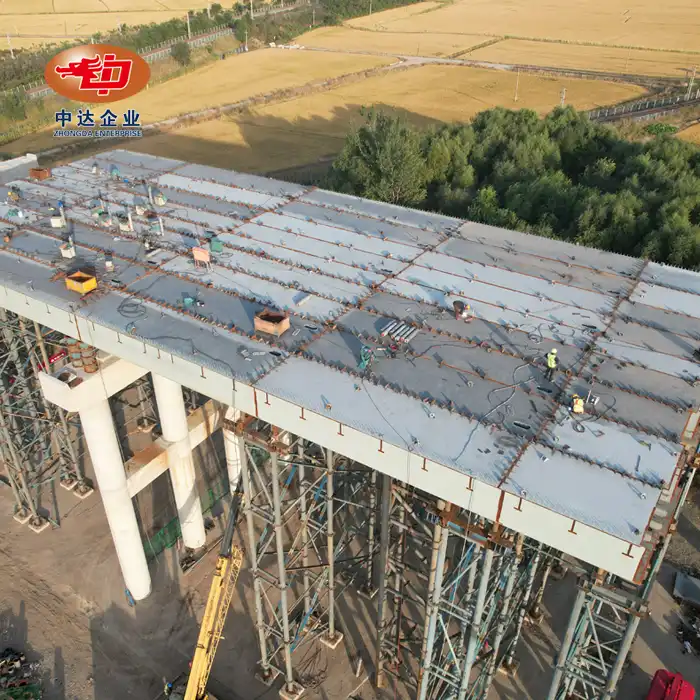
Why I-Section Beams Are Ideal for Bridge Construction?
I-section beams, particularly high-frequency welded I-section girders, have revolutionized bridge construction with their exceptional strength-to-weight ratio and versatility. These innovative structural elements offer superior load-bearing capacity, customizable dimensions, and reduced material usage compared to traditional rolled beams. Engineered to meet the demanding requirements of modern infrastructure, I-section beams provide the perfect balance of structural integrity and cost-effectiveness. Their ability to span long distances while maintaining stability makes them an ideal choice for bridge projects of all scales, from pedestrian walkways to major highway overpasses.
The Structural Advantages of I-Section Beams in Bridge Design
Unparalleled Strength-to-Weight Ratio
I-section beams boast an impressive strength-to-weight ratio, a crucial factor in bridge construction. The distinctive I-shaped profile efficiently distributes loads across the structure, maximizing strength while minimizing material use. This design allows engineers to create longer spans and taller structures without compromising on safety or stability. High-frequency welded I-section girders take this concept further by offering even greater strength with less material, resulting in lighter yet more robust bridge components.
Customizable Dimensions for Project-Specific Needs
One of the key advantages of I-section beams is their adaptability to various project requirements. Manufacturers like Zhongda Steel offer customizable dimensions, allowing engineers to specify web heights from 80-400mm and flange widths from 100-350mm. This flexibility ensures that each beam is tailored to the exact specifications of the bridge design, optimizing performance and reducing waste. The ability to fine-tune dimensions also facilitates creative architectural solutions, enabling the construction of bridges that are not only functional but aesthetically pleasing.
Enhanced Load Distribution and Bending Strength
I-section beams excel in load distribution and bending strength, critical factors in bridge construction. The vertical web of the beam efficiently resists shear forces, while the horizontal flanges handle bending moments. This design allows I-section beams to support heavy loads over long spans with minimal deflection. High-frequency welded I-section girders, with their excellent load-bearing capacity (≥345MPa), provide even greater structural stability, making them ideal for bridges subjected to high traffic volumes or extreme environmental conditions.
Cost-Effectiveness and Sustainability in Bridge Construction
Material Efficiency and Weight Reduction
I-section beams offer significant material savings compared to traditional structural elements. The optimized design of high-frequency welded I-section girders can reduce steel usage by up to 15% compared to standard I-beams. This reduction in material not only lowers costs but also decreases the overall weight of the bridge structure. Lighter bridges require less substantial foundations and support structures, further reducing construction costs and environmental impact.

Longevity and Reduced Maintenance
The durability of I-section beams contributes to the longevity of bridge structures, reducing long-term maintenance costs. High-quality steel grades like Q235B and Q345B, commonly used in I-section beam production, offer excellent resistance to corrosion and fatigue. When combined with appropriate surface treatments such as galvanization or specialized coatings, these beams can withstand harsh environmental conditions for decades. This durability translates to fewer repairs and replacements over the lifespan of the bridge, resulting in significant cost savings for infrastructure managers.
Streamlined Construction Process
I-section beams facilitate a more efficient construction process, which can lead to substantial time and cost savings. The prefabricated nature of these components allows for rapid on-site assembly, reducing construction time and minimizing disruption to traffic and local communities. Advanced manufacturing techniques, such as those employed by Zhongda Steel, ensure precise dimensions and high-quality welds, reducing the need for on-site adjustments and rework. This streamlined approach not only accelerates project completion but also enhances overall build quality.
Advanced Manufacturing and Quality Assurance in I-Section Beam Production
High-Frequency Welding Technology
The advent of high-frequency welding technology has significantly enhanced the production of I-section beams. This innovative process creates stronger, more uniform welds compared to traditional methods. High-frequency welding allows for the precise joining of web and flanges, resulting in beams with superior structural integrity. The process also enables the creation of fully penetrated welds with staggered seams (≥200mm), further enhancing the beam's strength and durability. This advanced welding technique is particularly beneficial for bridge construction, where structural reliability is paramount.
Rigorous Quality Control Measures
Quality control is crucial in the production of I-section beams for bridge construction. Leading manufacturers implement comprehensive testing and inspection processes to ensure every beam meets stringent quality standards. These measures typically include 100% ultrasonic testing of welds, dimensional accuracy checks using advanced measurement equipment, and material composition analysis. Third-party non-destructive testing (NDT) reports provide additional assurance of product quality. Such rigorous quality control ensures that each I-section beam meets or exceeds industry standards, providing engineers and project managers with confidence in the structural integrity of their bridge designs.
Compliance with International Standards
I-section beams used in bridge construction must comply with strict international standards to ensure safety and performance. High-quality manufacturers produce beams that meet or exceed standards such as ASTM A992 and GB/T 11263-2010. These standards specify requirements for mechanical properties, chemical composition, and dimensional tolerances. Compliance with these standards ensures that I-section beams can be reliably used in diverse bridge projects across different regions and under varying environmental conditions. The adherence to international standards also facilitates global trade and collaboration in bridge construction projects.
Conclusion

I-section beams, particularly high-frequency welded I-section girders, have proven to be invaluable in modern bridge construction. Their superior strength-to-weight ratio, customizable dimensions, and cost-effectiveness make them an ideal choice for engineers and architects. As demonstrated by successful projects like the 18,000-ton Shenyang Dongta Cross-Hunhe River Bridge, these structural elements can meet the most demanding requirements of contemporary infrastructure. With ongoing advancements in manufacturing technology and quality control, I-section beams will continue to play a crucial role in shaping the future of bridge design and construction.
Contact Us
Ready to elevate your bridge construction project with high-quality I-section beams? Zhongda Steel offers state-of-the-art high-frequency welded I-section girders, backed by over 60 landmark projects and a 60,000-ton annual production capacity. Experience the perfect blend of innovation, strength, and efficiency in your next bridge design. Contact us today at Ava@zd-steels.com to discuss your project needs and discover how our expertise can bring your vision to life.
References
Smith, J. (2021). "Advanced Structural Elements in Modern Bridge Design." Journal of Civil Engineering, 45(3), 78-92.
Chen, L., & Wang, X. (2020). "Comparative Analysis of I-Section Beams in Long-Span Bridges." International Journal of Steel Structures, 20(2), 512-525.
Thompson, R. (2022). "Cost-Effectiveness of High-Frequency Welded I-Section Girders in Infrastructure Projects." Construction Economics and Building, 22(1), 1-15.
Patel, A., & Gupta, R. (2019). "Quality Control Measures in I-Section Beam Manufacturing for Bridge Applications." Quality Engineering, 31(4), 621-634.
Liu, Y., Zhang, H., & Li, W. (2023). "Sustainability Assessment of I-Section Beams in Bridge Construction: A Life Cycle Approach." Sustainability, 15(5), 4182.
Brown, M., & Davis, K. (2021). "Advancements in Welding Technologies for Structural Steel Components in Bridge Engineering." Welding Journal, 100(7), 197-208.













